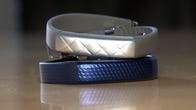

Now playing:
Watch this:
Jawbone Up3 and Move add sleek heart rate, affordability
1:37
Most wrist-worn activity trackers have some type of display. Not the Jawbone Up: its basic low-key design has always made it seem more like a piece of jewelry than a piece of tech. Now, as every other wearable company is working on its catalog of hardware in response to Apple, Google and everyone else, it’s Jawbone’s turn. I got a chance to try on Jawbone’s latest Up3 and Move fitness trackers in New York. Neither one is a watch. Instead, Jawbone has made an even sleeker band, and a surprisingly affordable little mini-tracker.
Jawbone Up3 and Up Move, up close: Fitness meets fashion (photos)
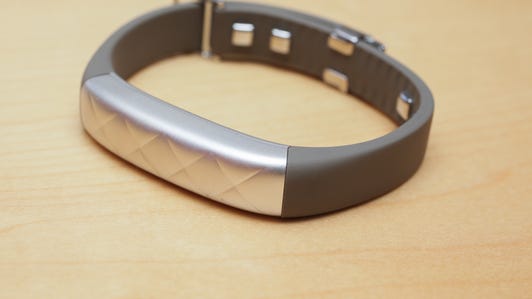

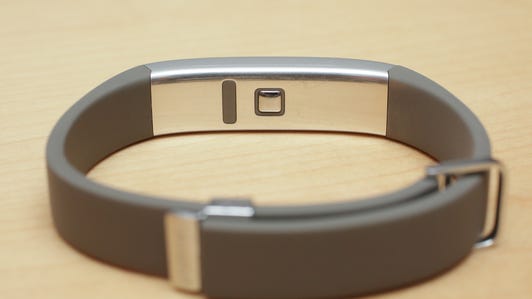

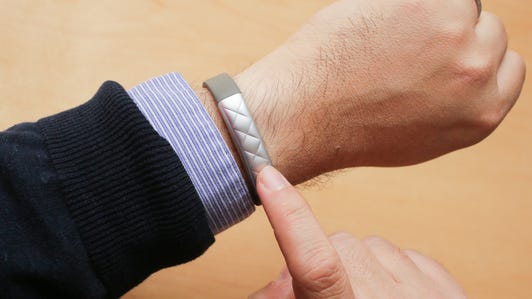

Up3: Heart rate on a bracelet
After a year, the new Jawbone Up3 aims for the same low-key approach as last year’s Up24, but even more so. It’s water-resistant up to 10 meters, too. From a casual distance, even close-up, it looks more like a bracelet than any type of smart device. And yes, now it does heart-rate tracking: 24 hours a day, for a week on a single charge.
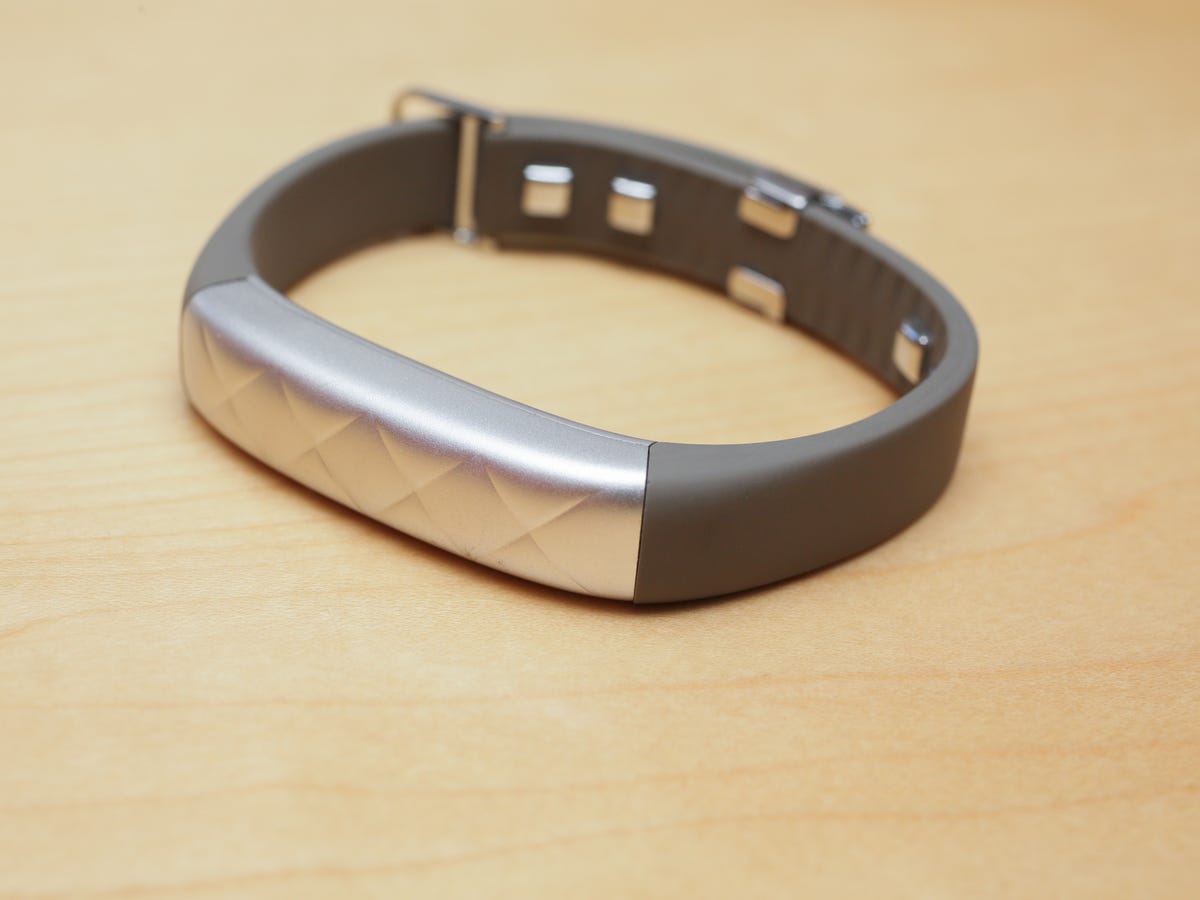
Sarah Tew/CNET
Suddenly, every wearable-health-device company is after continuous 24-hour heart-rate tracking. The Microsoft Band , Fitbit Charge HR and Surge and Basis Peak do it, and now the Jawbone Up3 does, too. What makes the Up3 different is it’s using different technology: bioimpedance, adapted from BodyMedia, a maker of fitness bands that Jawbone acquired in 2013. Instead of a green LED on the back that pulses in a strobe — the technological approach taken in nearly everything from the Moto 360 to Samsung’s Gear watches to the Fitbit Charge HR and Microsoft Band — the Jawbone Up3 has metal studs inside that conduct electrical bioimpedance measurements. The result is still heart-rate measurement, but Jawbone promises additional measurements like ambient and skin temperature readings, similar to what the Basis Peak does. It’s also fully water-resistant and swim- and-shower-friendly, something some heart-rate trackers struggle with.
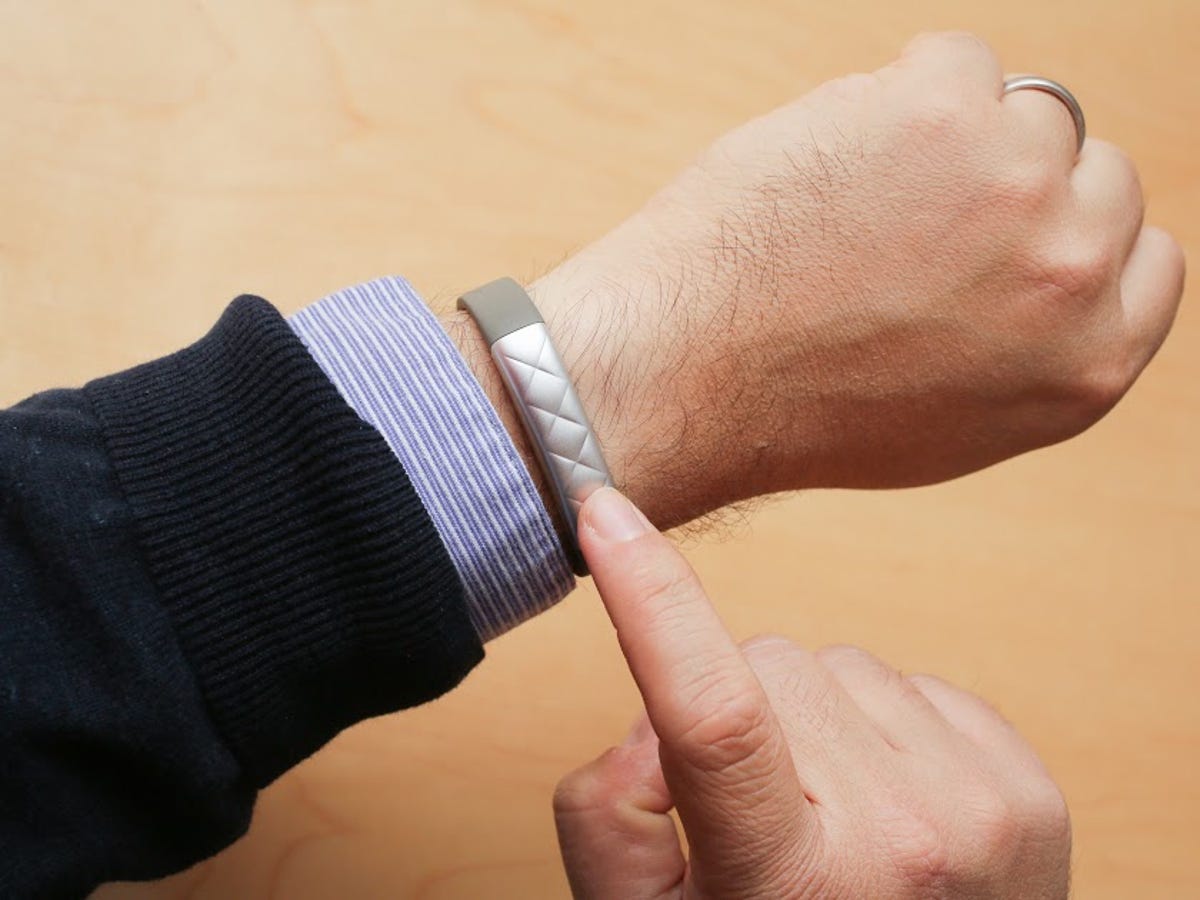

Sarah Tew/CNET
I got to try on a few Up3 sample bands during my briefing, and they felt sleek and comfortable, and a lot smaller than anything else out there. The front piece and frame are anodized aluminum, but the rest of the band feels soft to the touch, and snug on the wrist. They make the older Up bands look large and bulky. And unlike the older Up bands, the Up3 is one-size-fits-all. Yves Behar, the same designer who created all of Jawbone’s other iconic product designs, added a more jewelry-like clasp: it attaches like a cross between a watch and a necklace hasp.
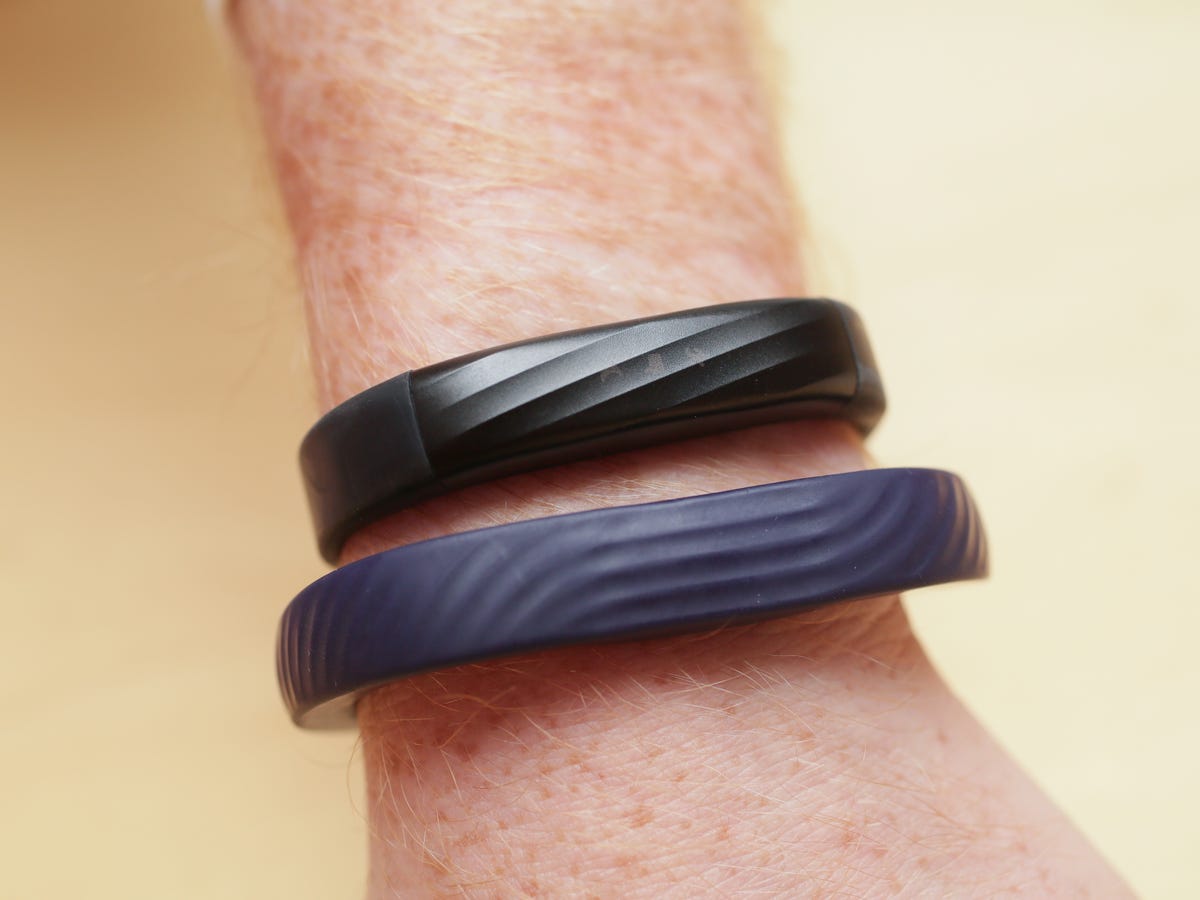

Sarah Tew/CNET
Jawbone’s new software in its revamped app will be able to track runs and other activities using the new Up3, everything from running to yoga to tennis and Zumba, with different tags you apply after your session. But sleep tracking and stress levels will be a lot of Jawbone’s fitness focus. Sleep tracking will incorporate heart-rate tracking, and a resting heart rate calculated overnight will be used as a new baseline target for fitness. Fitbit says its Charge HR and Surge trackers will bring similar types of functionality early in 2015.
The Up3, however, will be available this year — in the US, at least — and elsewhere in 2015. (Jawbone says “winter” for the UK and “by summer” for AU). It’ll come in a “Black Twist” design to start, and “Silver Cross,” the gray-and-silver design seen above, is coming next year. For that extra heart-rate tech, the Up3 will cost a little more than Up bands did before: $180 in the US (or £150 in the UK, and AU$230), versus $130 (in US dollars and AU$180 in Australia) for the still-available Up24 band.
Also, the new Up3-compatible Jawbone app will only be available for iOS this year, with an Android version coming next year.
That extra 50 dollars seems worth it for the Up3 band’s size and style improvements alone, not to mention the promise of heart-rate data. But unlike many other fitness bands, Jawbone’s newest band still doesn’t have a display, just a few LED icons. That may upset some people, but the Up3 is meant to be worn casually, and may not even be intended as a hard-core sports tracker; in fact, during my briefing, it was suggested that those who want data on peak exercise heart rates may want to still wear a second conductive band. At first, the Up3 will mainly focus on resting heart rate, but future updates will include more on-demand heart-rate info and, possibly, even metrics like hydration levels.
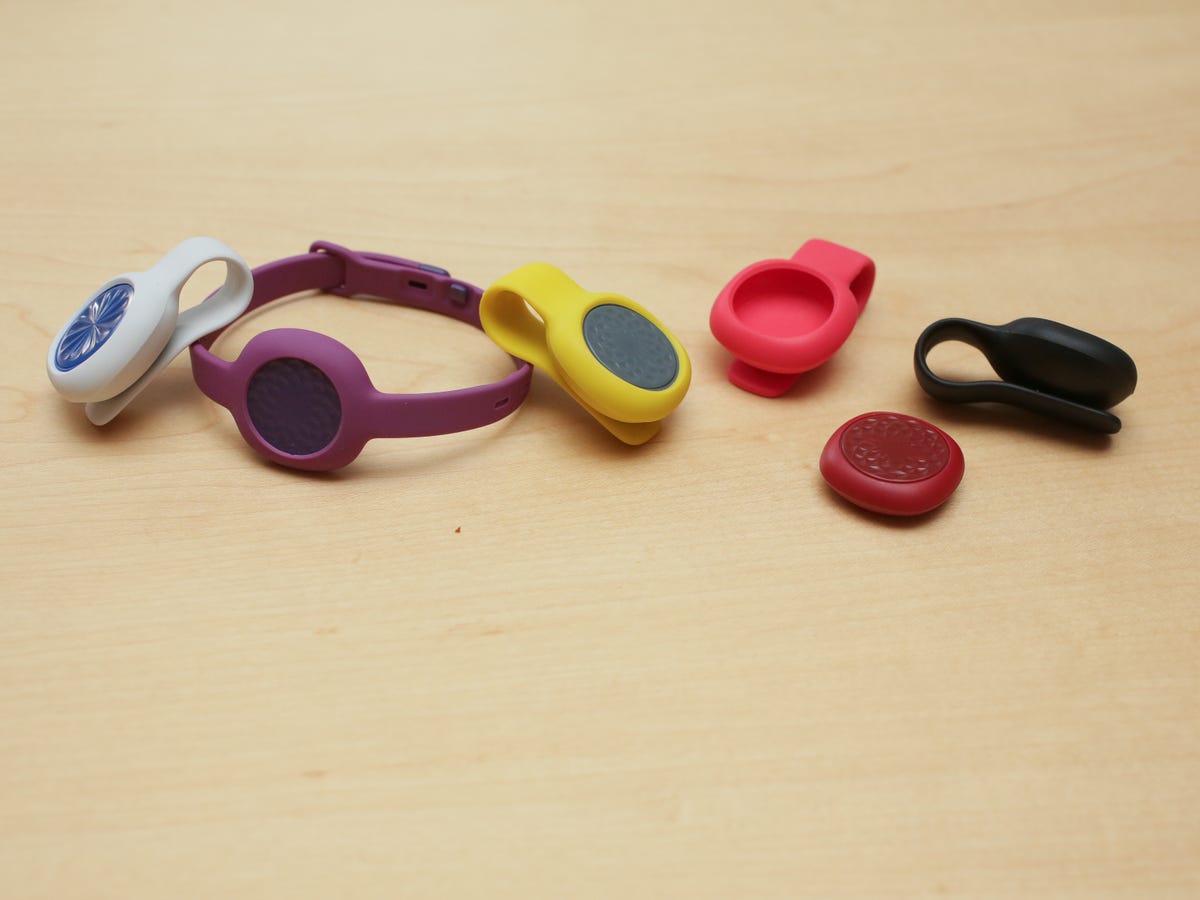

Sarah Tew/CNET
Up Move: The $50 plastic fitness tracker
Jawbone’s other offering is possibly more surprising: called the Up Move, it’s a tiny plastic puck. It pops into a clip, or a wristband. It tracks steps, or sleep, like the Jawbone Up24. And in design it feels a whole lot like the Misfit Shine, and the recently released and identically priced Misfit Flash . It’s certainly affordable: $50 (£40 in the UK, or AU$69). And it’ll be released this month around the world.
Much as with the Flash and Shine, you click the center of the Move to see your daily progress as a series of LED lights around the rim, or even the time in simple LED dots. It comes in a variety of colors and face designs, with extra wrist straps for $15 each.
The Move is smaller than the Misfit Flash, and a little more distinctively patterned. But, like the Flash, it uses a coin-type battery to get six months of use without charging. Unscrew the back and pop in a new battery when you need a new one, no charger necessary. Unlike the Misfit Flash, the Move is water-resistant but not intended for swimming.
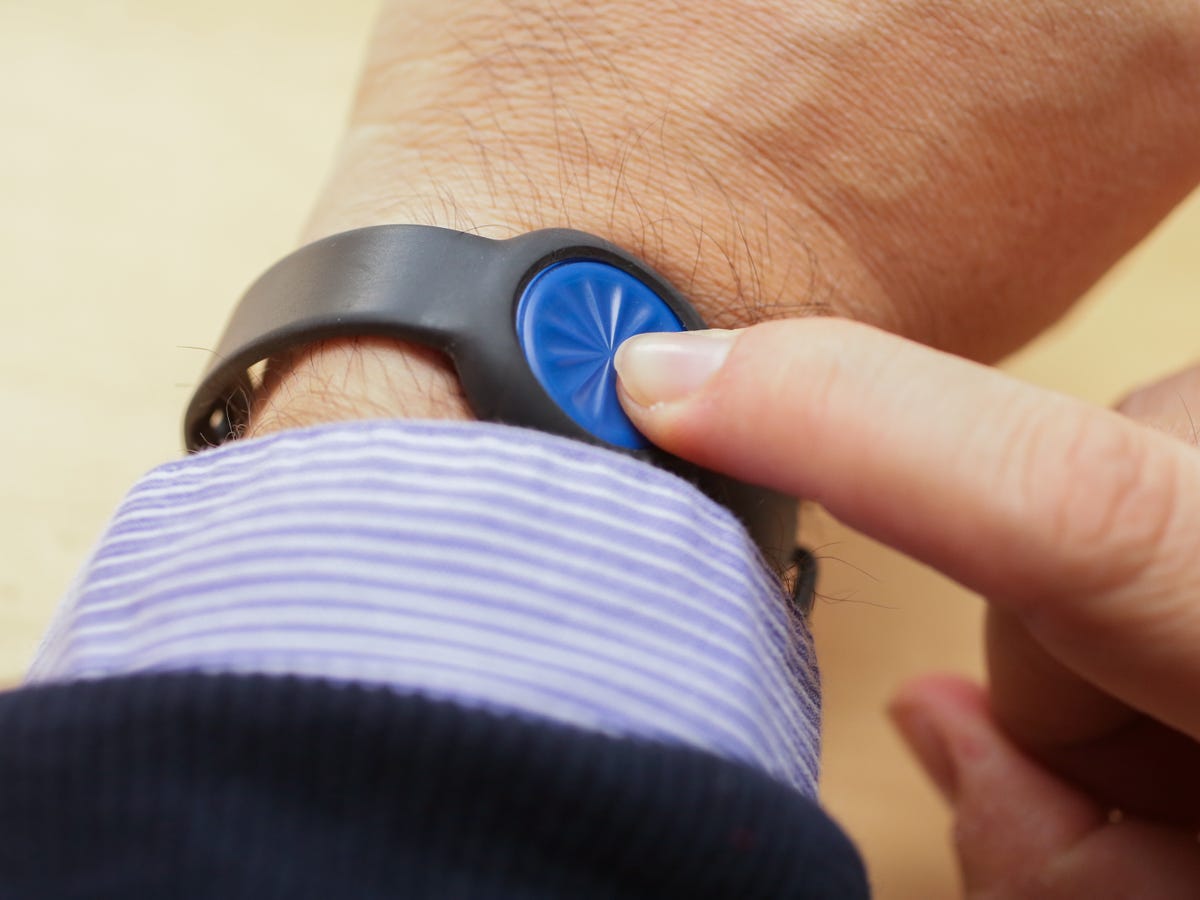

Sarah Tew/CNET
The Up Move is the lowest end of the Jawbone fitness hardware lineup, but last year’s Jawbone Up24 will remain on sale, too, for $130 (converts to about £80). The Up24 has similar functions, but also vibrates for silent alarms and move motivations.
Technically, you don’t need a Jawbone device at all to use the Up app, which remains the best overall fitness app I’ve seen. Jawbone’s open-platform app now allows phone pedometer data or even wearables, like the Pebble Watch, to input data, too. But Jawbone’s devices are the only ones that can engage in sleep tracking, arguably one of the most useful functions of the Up band.
Timed with the release of the Up3 and Up Move, new Up app features will consolidate its insight-based coaching and lifestyle guidance into a Smart Coach hub.
Stay tuned for reviews of both, but even without screens, Jawbone’s latest could end up finding very welcome niches in the growing fitness tech landscape: they’re the most discreet pieces of wearable tech I’ve seen lately. And, probably smartly, they’re avoiding direct competition with smartwatches as we know them.



